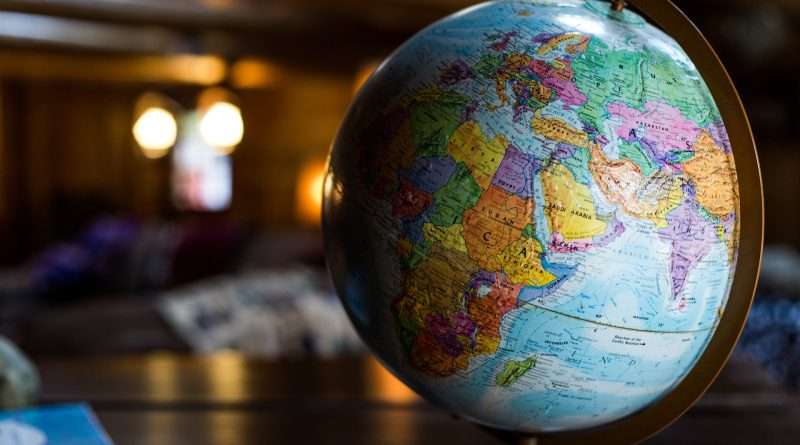What is Geography?
Geography is more than the canvas of maps and charts; it is an odyssey of understanding our world’s physical form and the intricate tapestry of life that weaves itself upon it. The etymology of the word ‘geography’ stems from the Greek roots’ geo‘, meaning Earth, and ‘graph‘, to write. Eratosthenes, an ancient Greek scholar, was the first to coin this term, embarking on a discipline that would evolve to bridge the cosmos and cultures, climates, and cartography.
In the vast expanse of geography, we find the connective tissue that binds the human narrative to the environmental stage on which it unfolds. From the elemental forces that mould the continents to the societal structures that define human interaction, geography is the nexus of the world’s dynamic systems.
This article aims to dissect the profound question, “What is Geography?” by delving into its essence, the framework of its study, and its practical implications in the modern world. We will traverse from the historical corridors where geography first charted its course to the contemporary digital landscapes where Geographic Information Systems (GIS) have revolutionized the field.
The Essence of Geography
Unveiling the Earth’s Narrative
Geography is not a mere recollection of Earth’s features and human capitals; it’s an exploration of the “what,” the “where,” and the quintessential “why.” It unravels the narrative of Earth’s landscapes, cultures, and the symbiotic relationship between the two. Physical geography serves to decode the Earth’s complex physical processes, while human geography casts light upon the patterns of human activity.
Tracing the Roots
Eratosthenes’ ancient legacy persists today as geographers explore the “geo” – Earth’s terrains, climates, and habitats, and the “graph” – the documentation and analysis of these elements. Physical geography looks at the natural environment, human geography examines human societies, and environmental geography studies the interplay between humans and nature.
The Confluence of Science and Society
Geography is unique in its marriage of the social sciences with the natural sciences. It transcends academic disciplines to investigate cultural dynamics, political frameworks, and economic networks, all while maintaining a firm grounding in the understanding of Earth’s physicality.
The Study and Structure of Geography
The Divisions of Geography
- Physical Geography: The Earth’s physique is its jurisdiction, analyzing phenomena from mountain ranges to ocean currents.
- Human Geography: The societal mirror, reflecting upon who we are through the prisms of demographics, urbanization, and culture.
- Environmental Geography: The mediator, assessing human impacts on nature and vice versa, straddling the divide between the anthropogenic and the natural.
The Modern Geographer’s Toolkit
GIS has emerged as a cornerstone of contemporary geography. It empowers geographers to transcend traditional boundaries, allowing for the analysis, interpretation, and projection of spatial data in ways once unfathomable.
Geographic Inquiry in Action
Geography’s relevance touches every aspect of life, from natural disaster planning and resource management to urban development and environmental conservation. It’s an integral component in policy formulation and strategic planning across the globe.
The Multidisciplinary Facets of Geography
Bridging Realms
Geography is inherently multidisciplinary, melding climate science with sociology, economics and ecology. It tackles grand challenges like climate change and resource management, providing a comprehensive lens through which we can understand and address these issues.
Societal and Environmental Interactions
The study of geography equips us with the knowledge to make informed decisions that affect the environment and society. It challenges us to consider our footprint on the Earth and how we can coexist sustainably with our environment.
Geography’s Role in the Modern World
GIS: The Revolution of Spatial Analysis
The advent of GIS has transformed geography from a static study to a dynamic practice. It enables us to visualize, question, interpret, and visualize data to uncover relationships, patterns, and trends in a globally connected world.
Global Awareness and Local Action
Geography informs our understanding of global changes and local impacts. It elucidates the interconnectedness of human and physical processes, providing a spatial perspective that is crucial for comprehensive planning and decision-making.
The Evolution of Geography
As the world grows more complex, the discipline of geography is continually expanding its horizon. It no longer just answers the questions of “what” and “where” but also provides solutions to “why” and “how” we can progress towards a sustainable future.
What Did We Learn Today?
Geography, in its broadest sense, is a journey through the complexities of Earth and the diverse narratives of its inhabitants. It is a discipline that connects the historical with the contemporary, the physical with the human, the local with the global. Understanding geography is to understand our world and our place within it, an understanding that becomes increasingly vital as we navigate the challenges of the 21st century.

